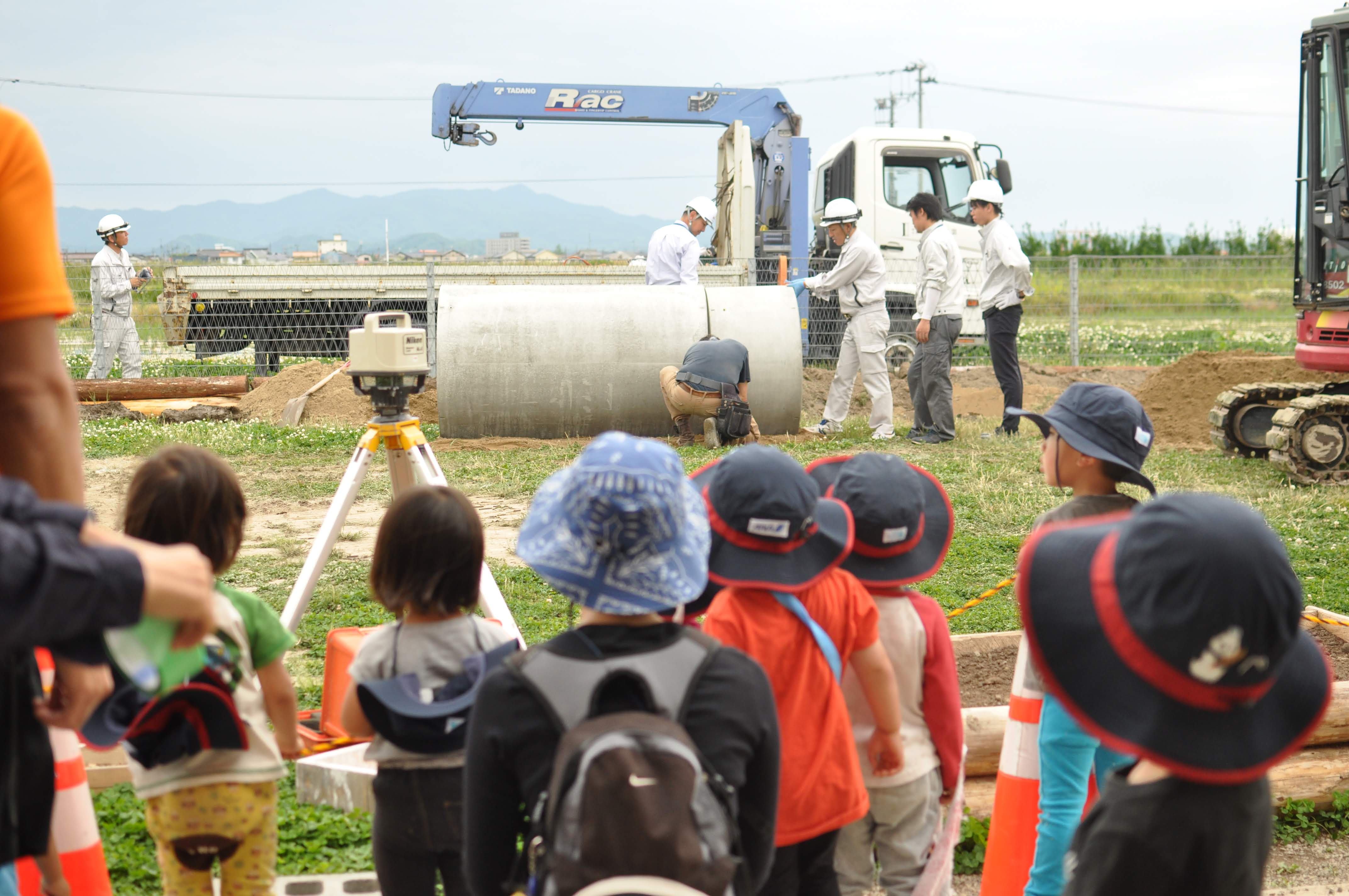
2019.06.07 “Playground” to “Little Planet”
Text : Aya Endo
From May 31st and June 2nd, a construction work has been conducted on our playground and a site that was entirely flat went through a huge transformation. This project started in January in 2018, when Saeko Imai and I visited Phil Cashman, a permaculture designer, at his farm in Chiba. Saeko studied Permaculture Design in Vermont in the United States and went to study groups which discuss how to incorporate permaculture design and philosophy into childcare at “Gokan no Mori (Forest of Five Senses, a childcare center in Zushi)” in Kanagawa. Through this experience, she was certain that she wanted Phil to be our advisor and he kindly accepted our request.
Since then, Phil came to Tsuruoka a numerous times and conducted a workshop with the team, and like water percolating through the topsoil, slowly but surely the project came into fruition. During the 2 days workshop, one staff suggested to shift the word “playground” to “little planet”and since then “little planet” is the word that is used to refer to our playground. This shows that through discourses, our consciousness and identity have naturally shifted towards becoming the creators of a space where the “sensibility” grows.
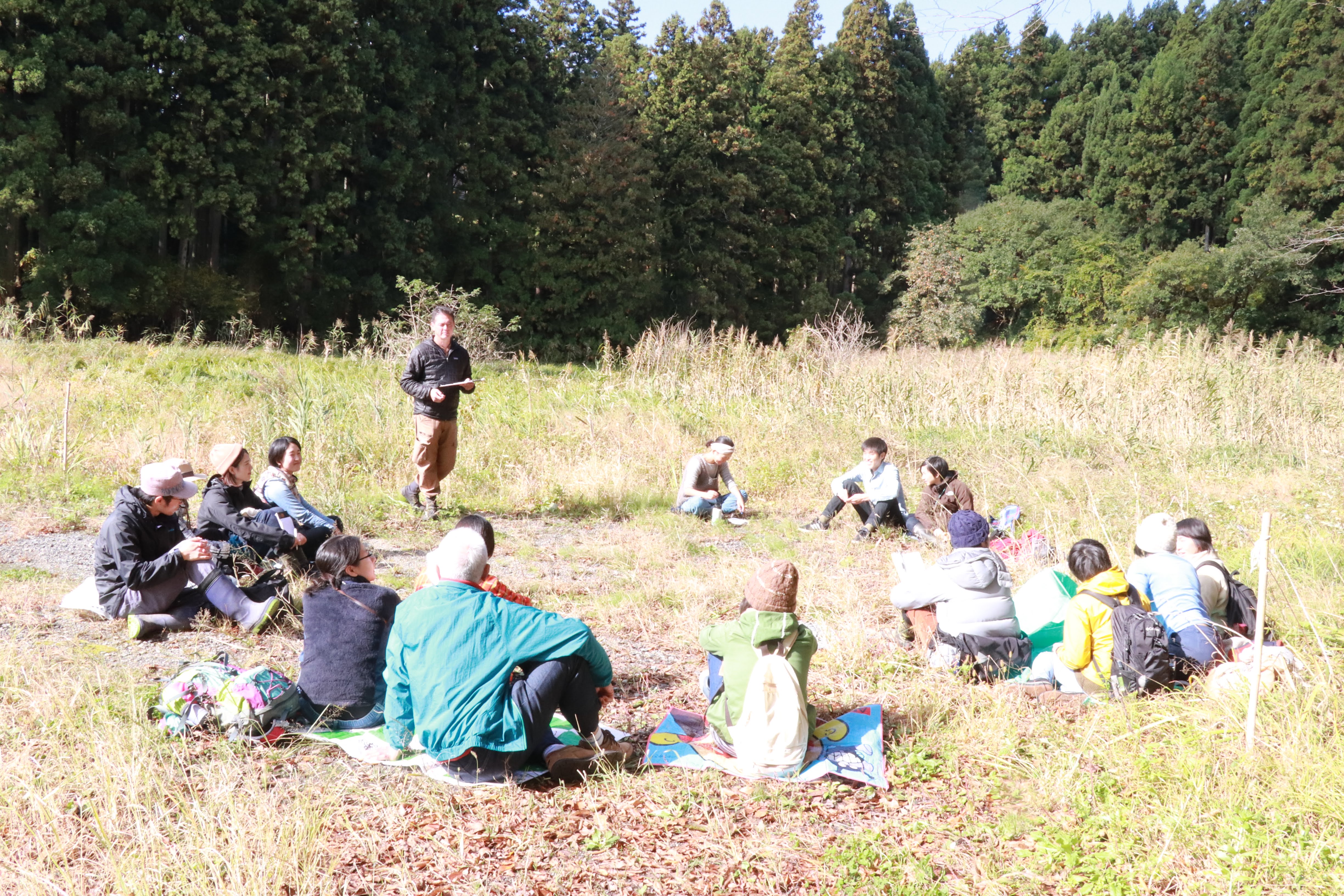
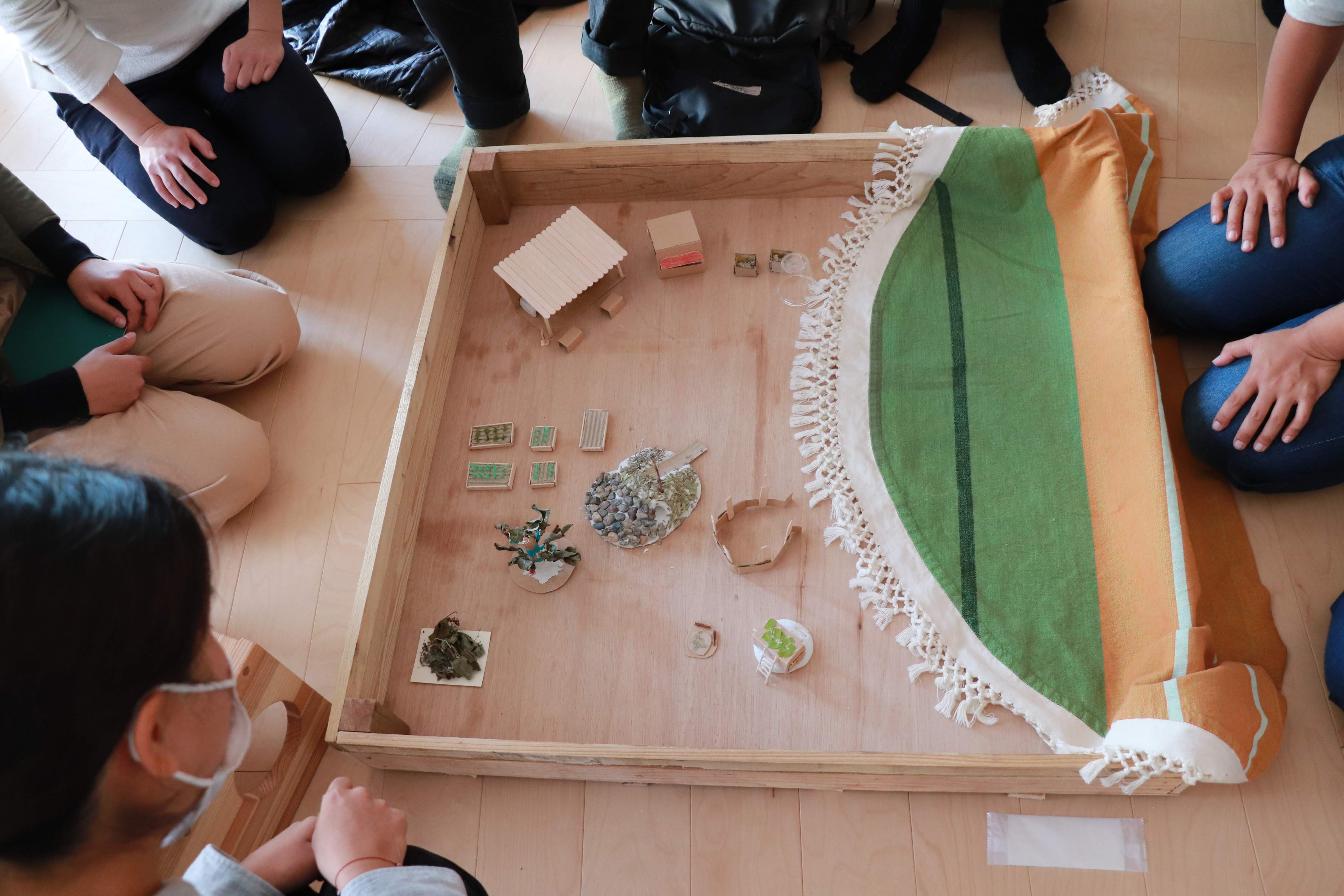
Here are the challenges and the remedies of Little Planet
1. Very strong wind! > Difficult environment for vegetations.
Remedy: Creating mounds that serve as windbreak and planting trees on top→changing the flow of the wind.
2. Bad water drainage> Originally, the land was used for patty fields so very sticky, clay soil.
Remedy: Creating a water way by making slopes and a pond → water element that children can play and learn from, as well as a place where it provides an escape from the heat.
3. Strong rays of sunshine > Since there are no trees, there are no places to avoid the harshness of the sun
Remedy> Planting a tree which will become a symbol for Yamanoko, which creates shades .
Because, in permaculture, we value “observation and research”, it took a long phase to come to the next step, which was creating the big design and sharing the image with the whole staff.
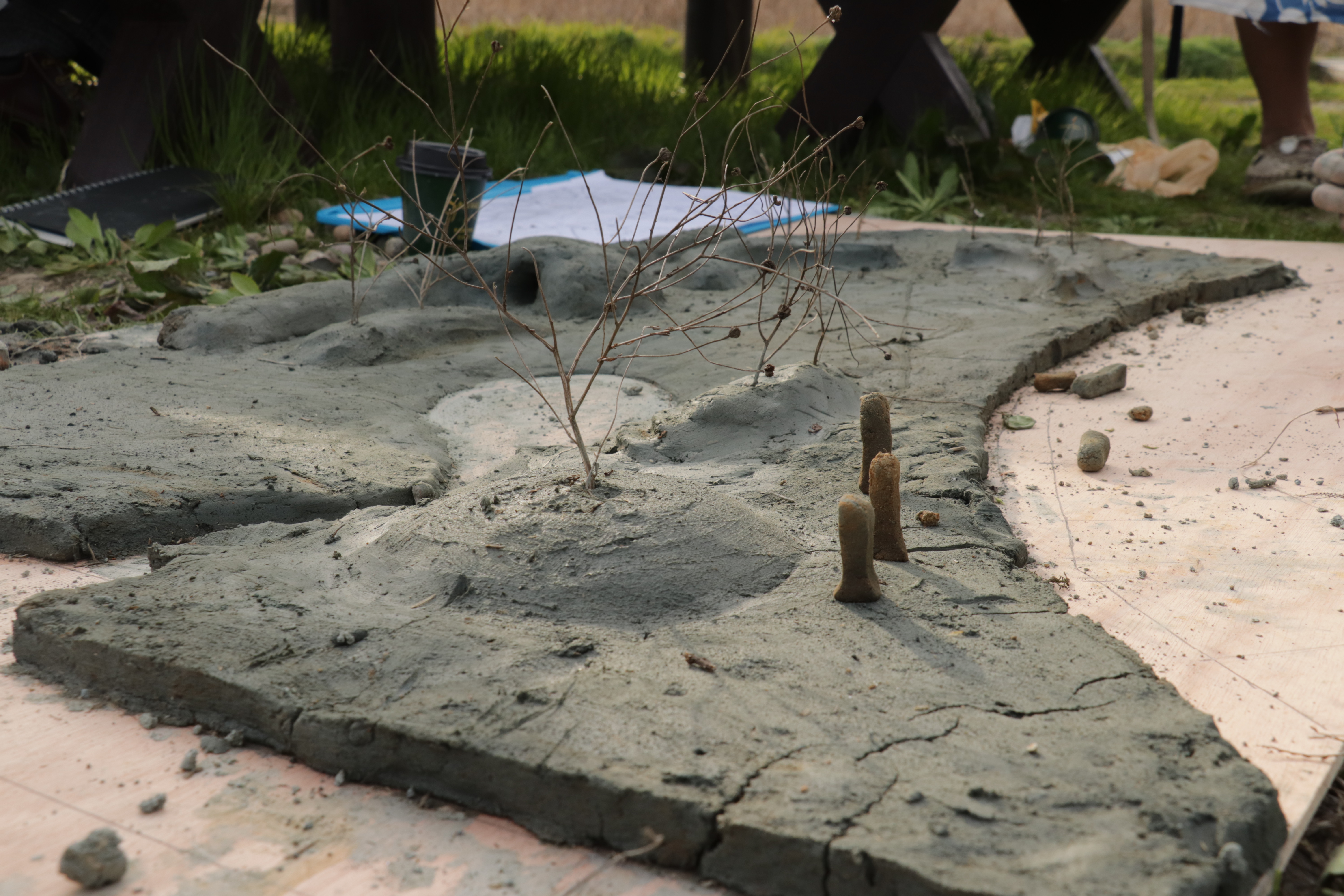
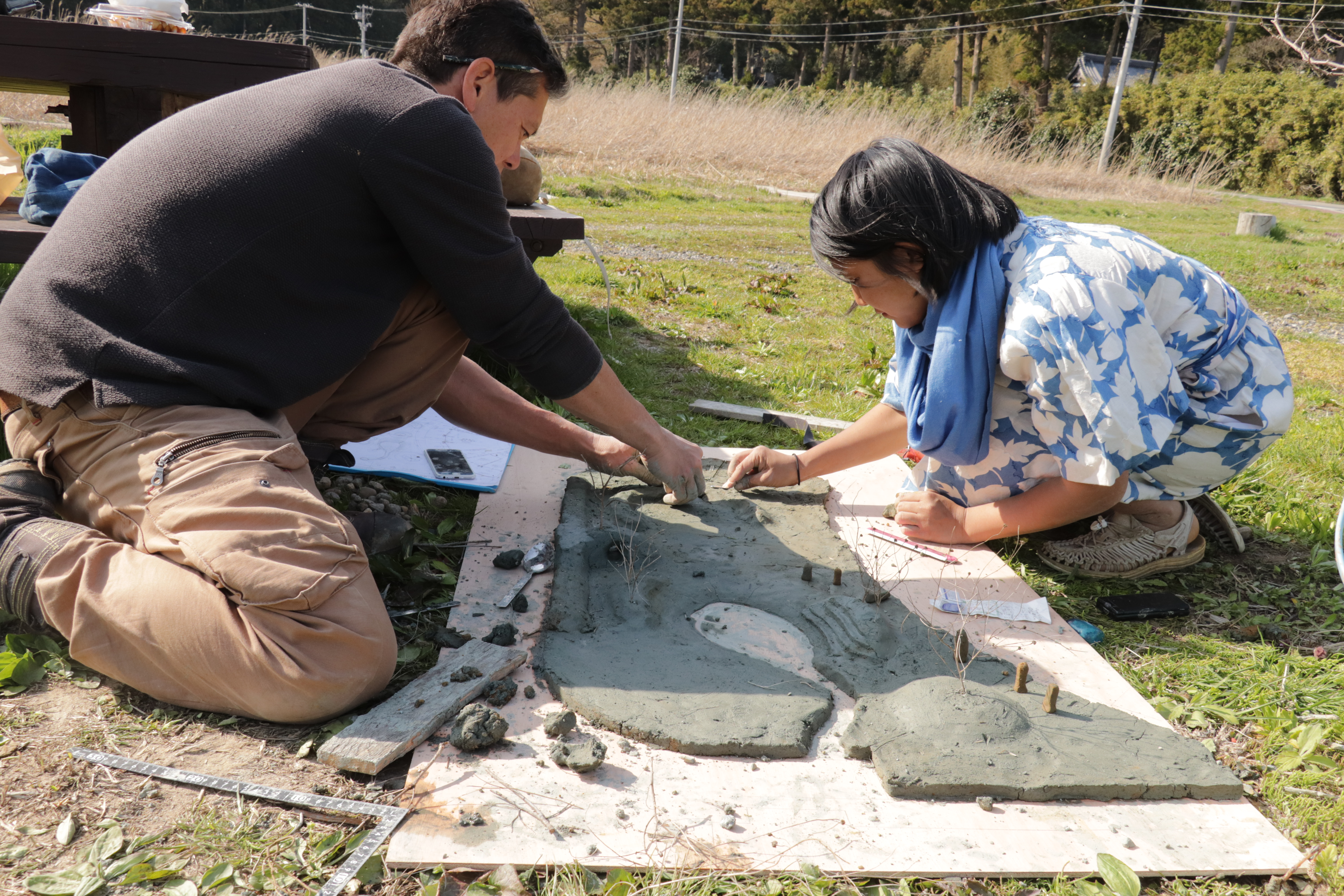
There were many stories to be told till we came to the day of May 31st, our first day of construction. Looking back, there were the days where we encountered the richness of the land and the people.
For example, the cedar logs used for retaining walls and garden beds were freely given to us by Mr. Naganobori, the owner of a gallery tea room Sui from Yuza. The rich soil from the bottom of the Mt. Chokai will be used for our gardens, and the clay soil found from the bottom of a patty field was used to make a model. The process of finding material resources took us on a journey where we realized just how abundant the land is. Furthermore, we encountered and were touched by many people who wanted to help us because they wanted to pass over the beauty and lushness of the land. Materials such as soil, compost, equipments, and seedlings were offered to us. Often people stopped by just to see how we were doing and took their time to listen our needs. One of permaculture’s principles is “creatively use and respond to change”. Like it is stated in the principle, through the warm interactions with everyone, the foundations of Yamanoko were cultivated and transformed.
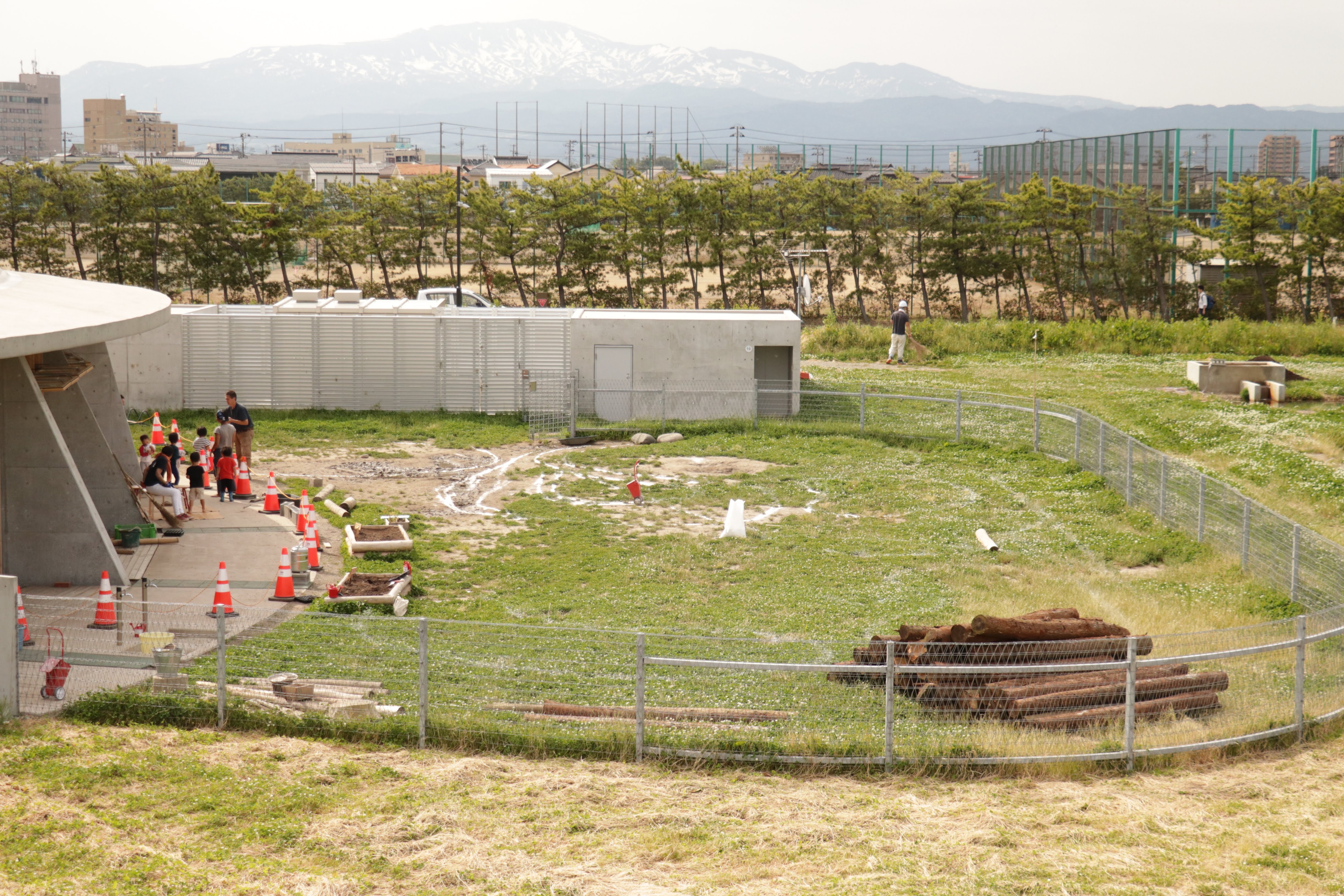

Then came 31st of May; the first day of construction. Saito Plumbing, who offered us an earthen pipe for children to hide and play as a tunnel for free, came all the way from Higashine-City to deliver us the pipe. We met Saito Plumbing, who had been considering to start their own childcare center, when they came for tour of Yamanoko a few months back. When we told them we were looking for a pipe, they took immediate actions and came to set up the pipe for free, all for their good hearts. The installation of the pipe was the main event for the day. Children watch the scene, with much anticipation and a little bit of suspense.
Because the pipe connects us to Higashine, we called the tunnel “Higashine Tunnel”. We are forever grateful for their gracious offer and treasure the pipe forever.
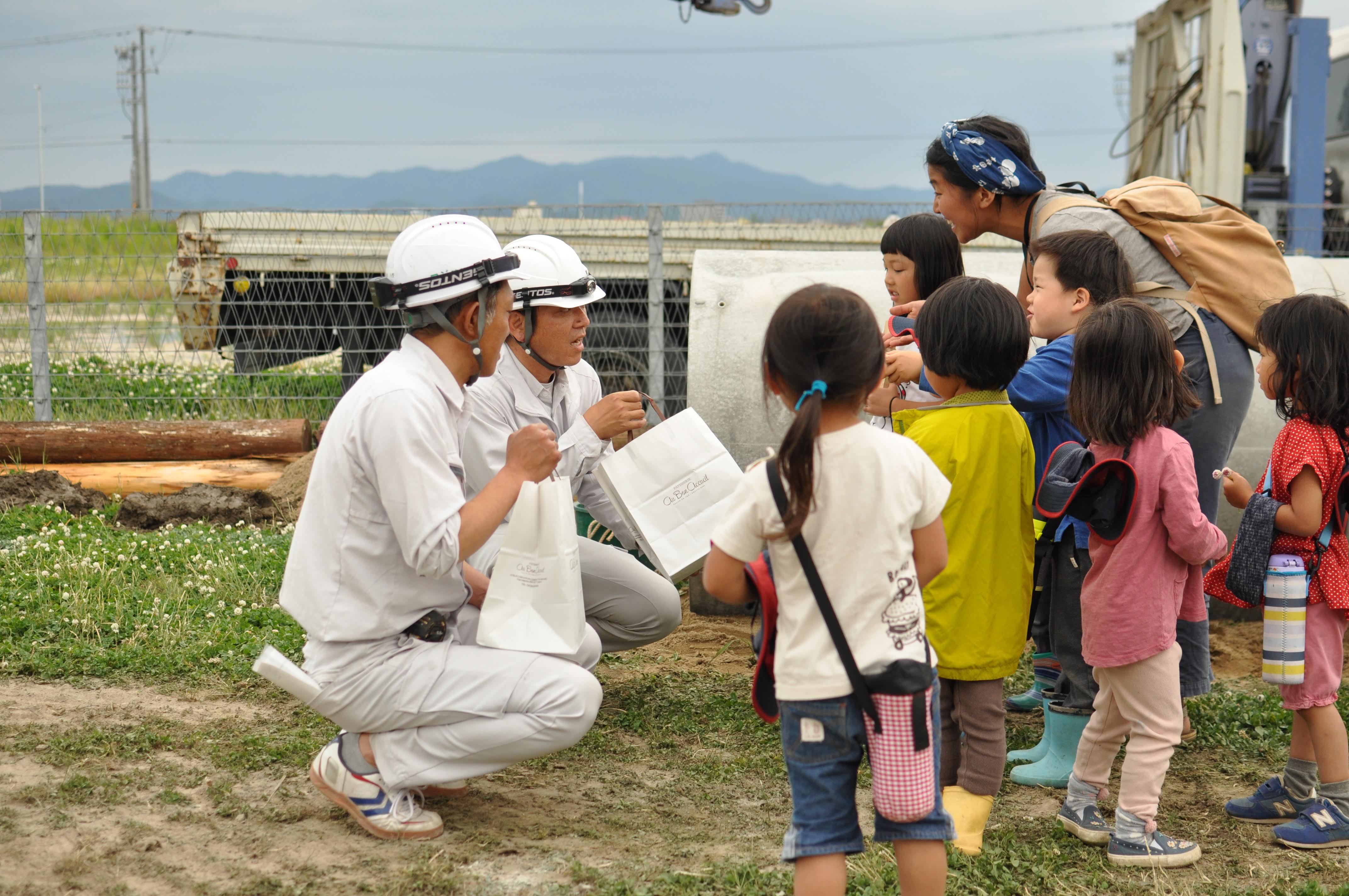
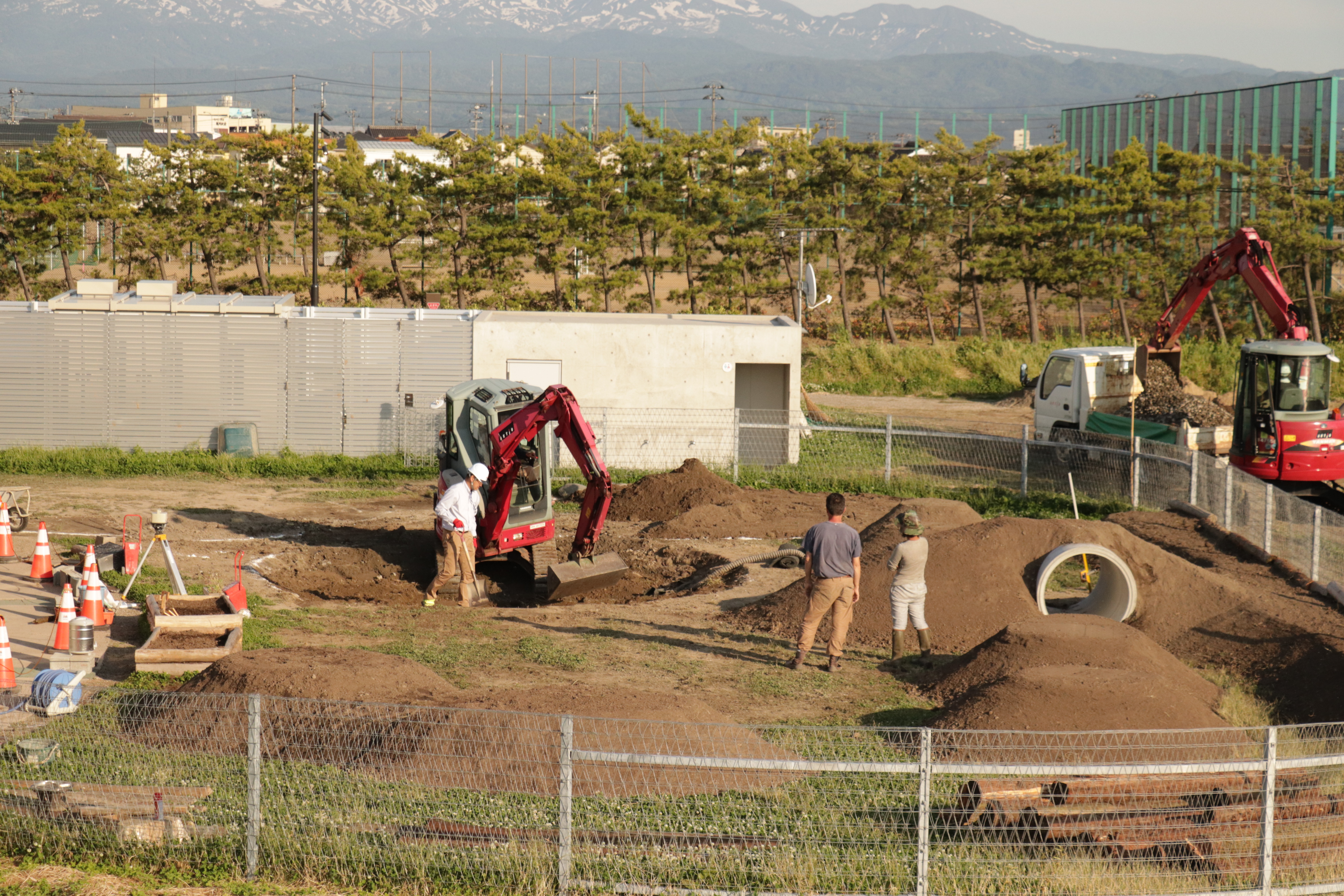
The procedures of the construction after setting up the pipe are 1) making mounds out of 3 kinds of soil (clay, loamy soil, and compost) and 2) digging up some soil to make a pond. The reason why we decided to make a pond is because if you dig into the land where it used to be patty fields for about 60 cm, the groundwater starts to appear. Surely, when Sorai was in its making we dug a hole into the ground, the groundwater came out. Experiencing this, it was important that we were using this characteristic of the land to our advantage, and that the children experience through their everyday playing that there are water underneath them.
We designed this pond, by taking safety into consideration through depth and zoning. However, when we were digging into the land on our second day, no matter how much digging we did, no water came. When we dug 130cm deep, there was some water coming out, but not enough to make a pond. We could make an artificial pond by spreading waterproof sheet but that would be artificially creating “the uniqueness of the land”. Phil, Saeko, and operators from Marugo, the construction workers, decided to put stones and sand into the hole where the pond originally was going to be, and created a sandcastle/area with great water drainage.
Because there was a sudden change in plans, the construction went on after 7pm on the second day, and another day the next week. The construction had finished safely, however the journey of creating Little Planet continues on. If it were to be compared to a symphony, the first section had just begun. But I am so pleased that even in the beginning of the project, so many artists and musicians joined to play and created a beautiful harmony.
**
What is Permaculture?
“Permaculture is defined as consciously designed landscapes which mimic the patterns and relationships found in nature, while yielding an abundance of food, fibre and energy for the provision of local needs…more precisely I see Permaculture as the use of systems thinking and design principles that provide the organising framework for implementing the above vision” David Holmgren ‘Pathways to Sustainability’ 2004
Permaculture is a term The term permaculture is a contraction of the words “permanent,” “agriculture,” and “culture.













 PREV
PREV